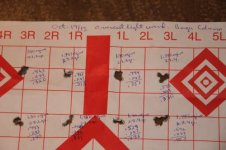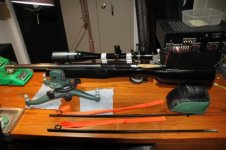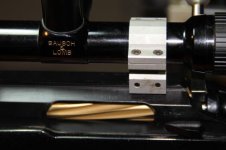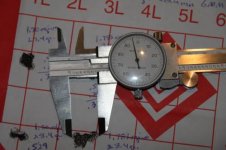R
rodauto
Guest
Decided it is time to get serious about reloading for this rifle, 6mm ppc with 262 tight neck chamber. I have been using my Wilson neck sizer die as that is what came with the rifle along with the Lapua brass formed from 220 russian.
I have started from scratch as I have been getting varying degrees of success with this rifle and until now haven't been able to nail down a load that I am happy with.
I had been ignoring the case length as all the cases were too short, likely from trimming to length before fire forming. (I am guessing this is the case because when I did this with my Sako that was the result I ended up with.
All my brass is now 1.487 to 1.488 trimmed length.
Adjusted my Redding full length sizing die from my 6mm ppc USA die set to bump shoulder about .003 until I get a proper die, then ran them through my neck sizing die to be ready to reload.
Cleaned, cleaned and then cleaned the rifle some more to remove any moly that remained, never saw any copper even when using Hoppes No 9. just some carbon that came out quite easily.
Chucked the idea of free recoil for now as I had introdused so many variables I didn't know where to look for problems!
I am trying the AA 2015 powder and loaded Berger column and 68 Gr Berger Molly bullets
First thing I noticed with clean barrel and Berger column (not Moly) bullets was that the first shot was about .7 inches high, never experienced that with the molly bullets from a clean bore in all the time I have shot this rifle!
Shot 9 three shot groups with Column bullets best .137, next .147, worst was .285 not counting the first group of course at 1.53
Shot 6 three shot groups with berger 68 grain molly and ran out of time best was .171, then .199 worst, .460
I know I need 5 shot groups to prove anything but wanted to get an idea of where to start with my new powder/ bullet combination. Most of the smallest groups produced a nice round hole rather than a vertical or horizontal group and from what I understand/ have read, this is a good indication of a load that is "in tune?"
I am looking at the Whidden full length sizing die with bushings to size the neck, and will continue to use my Wilson seater die. Any reason I should consider a different full length sizing die? I am getting tired of buying multiple sets of dies that end up on the shelf!!
Rodney
I have started from scratch as I have been getting varying degrees of success with this rifle and until now haven't been able to nail down a load that I am happy with.
I had been ignoring the case length as all the cases were too short, likely from trimming to length before fire forming. (I am guessing this is the case because when I did this with my Sako that was the result I ended up with.
All my brass is now 1.487 to 1.488 trimmed length.
Adjusted my Redding full length sizing die from my 6mm ppc USA die set to bump shoulder about .003 until I get a proper die, then ran them through my neck sizing die to be ready to reload.
Cleaned, cleaned and then cleaned the rifle some more to remove any moly that remained, never saw any copper even when using Hoppes No 9. just some carbon that came out quite easily.
Chucked the idea of free recoil for now as I had introdused so many variables I didn't know where to look for problems!
I am trying the AA 2015 powder and loaded Berger column and 68 Gr Berger Molly bullets
First thing I noticed with clean barrel and Berger column (not Moly) bullets was that the first shot was about .7 inches high, never experienced that with the molly bullets from a clean bore in all the time I have shot this rifle!
Shot 9 three shot groups with Column bullets best .137, next .147, worst was .285 not counting the first group of course at 1.53
Shot 6 three shot groups with berger 68 grain molly and ran out of time best was .171, then .199 worst, .460
I know I need 5 shot groups to prove anything but wanted to get an idea of where to start with my new powder/ bullet combination. Most of the smallest groups produced a nice round hole rather than a vertical or horizontal group and from what I understand/ have read, this is a good indication of a load that is "in tune?"
I am looking at the Whidden full length sizing die with bushings to size the neck, and will continue to use my Wilson seater die. Any reason I should consider a different full length sizing die? I am getting tired of buying multiple sets of dies that end up on the shelf!!
Rodney





